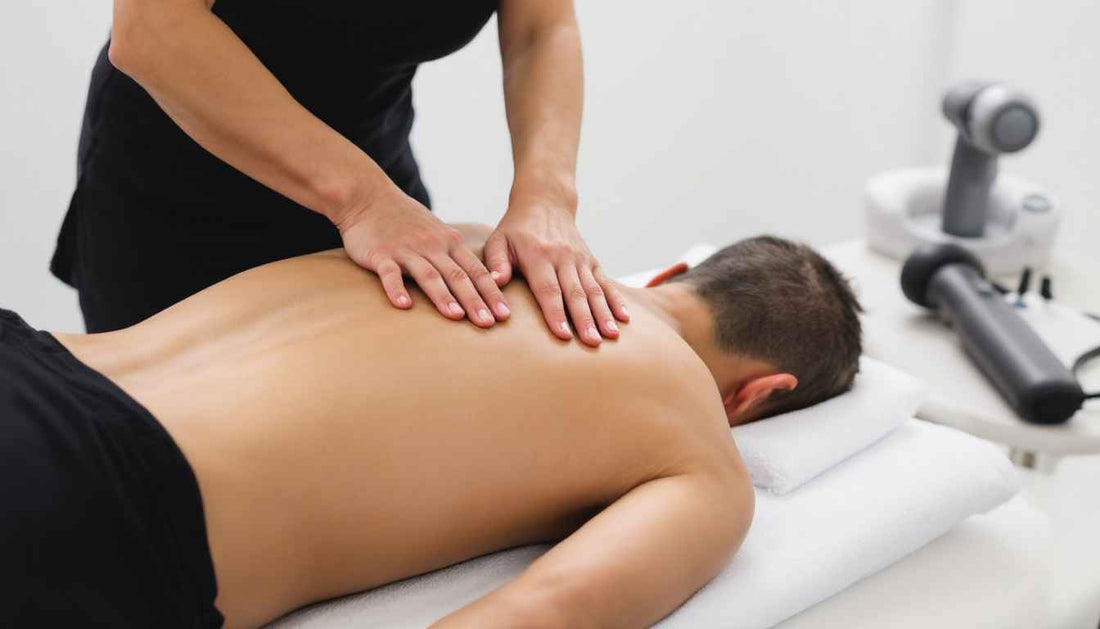
What Is Deep Tissue Massage? How It Works & Why You Need It
Share
If you’ve ever had stubborn knots in your shoulders or nagging pain in your lower back, you’ve likely been told to try deep tissue massage. But what is deep tissue massage exactly, and why is it so effective for chronic pain and recovery? In this guide, we’ll break down the key benefits, techniques, and at-home tools that replicate the deep tissue experience — no appointment necessary.
What Is Deep Tissue Massage?
Deep tissue massage is a therapeutic technique that targets the deeper layers of muscles and connective tissues. Unlike Swedish massage, which focuses on relaxation, deep tissue therapy applies more intense pressure to release chronic muscle tension, improve mobility, and aid recovery.
How Deep Tissue Massage Works
Deep tissue massage uses slow strokes and deep pressure with fingers, elbows, or tools. The goal is to break up scar tissue, release muscle adhesions, and increase blood flow to support healing. It’s commonly used by athletes, chronic pain sufferers, and people recovering from injuries.
6 Key Benefits of Deep Tissue Massage
1. Relieves Chronic Muscle Tension
By focusing on tight muscles and fascia, deep tissue massage can provide relief from long-term stiffness and improve range of motion.
Tool Tip: A powerful massage gun with variable speed settings targets deep muscle layers effectively.
2. Improves Posture and Flexibility
Tight muscles often lead to misalignment. Deep tissue work can lengthen shortened muscles and reduce posture-related pain.
Recommended Tool: Use a foam roller to stretch and loosen connective tissue before and after workouts.
3. Supports Injury Recovery
Whether it’s from sports or repetitive strain, deep tissue massage helps speed recovery by increasing circulation and reducing inflammation.
Home Option: Heat and vibration therapy pads work well to improve circulation in injured areas.
4. Breaks Down Scar Tissue
Scar tissue from injuries or surgeries can limit mobility. Deep tissue massage helps soften and break down this tissue over time.
Best Tool: Try a massage scraper or Gua Sha tool with an anti-friction massage oil.
5. Alleviates Stress and Mental Fatigue
Though intense, deep tissue massage also has calming effects by releasing trapped tension and stimulating the parasympathetic nervous system.
Relaxation Booster: Combine your session with calming aromatherapy diffusers.
6. Reduces High Blood Pressure
Studies show deep tissue massage can lower systolic and diastolic blood pressure in people with chronic stress and pain.
Helpful Tool: Try a full-body massage mat with adjustable intensity and heat.
Related Articles
FAQs
What is the purpose of deep tissue massage?
The purpose is to relieve chronic muscle tension, improve mobility, and support injury recovery by applying sustained deep pressure to deeper layers of muscle.
Is deep tissue massage painful?
It can be uncomfortable but should never be painful. A good therapist or tool allows you to adjust pressure to your comfort level.
Can I do deep tissue massage at home?
Yes. Using tools like massage guns, foam rollers, and scraping tools can provide deep tissue benefits at home.
How often should I get deep tissue massage?
For chronic issues, once a week is ideal. For maintenance or recovery, once every two weeks is sufficient.
Final Thoughts
Deep tissue massage is one of the most effective ways to treat stubborn muscle tension, improve mobility, and promote overall well-being. And with the right tools, you can enjoy these benefits anytime — no need for expensive appointments.
Take the Next Step
Download our free guide: "The Deep Tissue Toolkit: 5 Devices Every Home Should Have" and explore our curated collection of professional-grade massage
